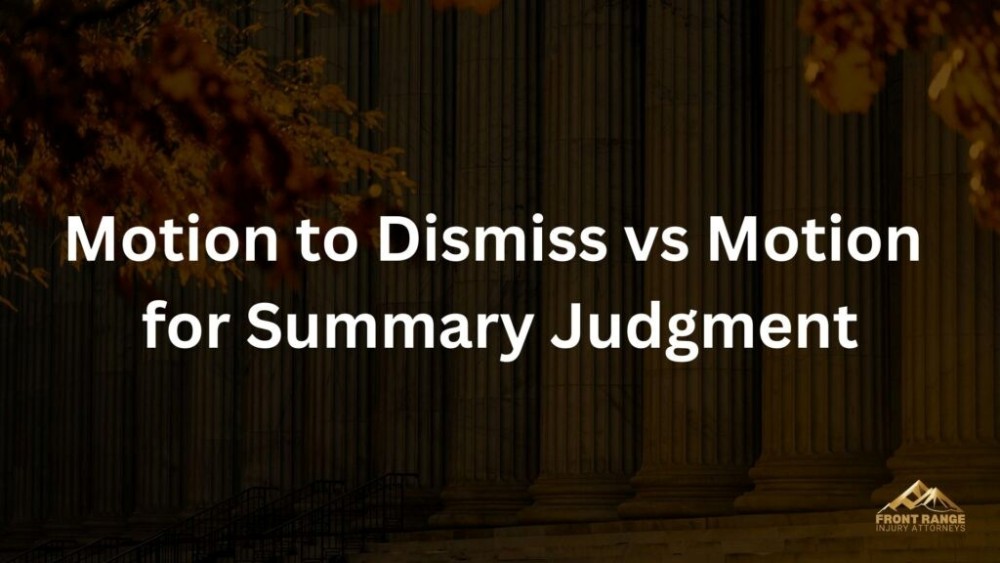Get Your Legal Documents Now!
Whether you are dealing with a complex family matter, facing criminal charges, or navigating the intricacies of business law, our mission is to provide you with comprehensive, compassionate, and expert legal guidance.

Wondering whether to file a motion to dismiss or summary judgment? Learn the best timing and strategy for each motion to maximize your chances in litigation. Legal Husk explains when dismissal is the smarter choice.
When Should You File a Motion to Dismiss Instead of a Motion for Summary Judgment?
Introduction
In litigation, timing and strategy can be everything. Filing the right motion at the right time can determine whether your case ends early or drags on through discovery and trial. Two of the most effective tools for resolving cases early are the motion to dismiss and the motion for summary judgment. But how do you know which one to file—and when?
This guide focuses on one of the most important strategic questions litigants face: When should you file a motion to dismiss instead of a motion for summary judgment? Understanding the difference in purpose, timing, and evidentiary requirements can save you thousands in legal fees—and possibly win your case before it truly begins.
What Is a Motion to Dismiss?
A motion to dismiss asks the court to throw out a case or claim because it fails to meet basic legal standards. It does not rely on factual evidence—instead, it tests the legal sufficiency of the complaint.
Common Grounds for Dismissal:
Key Feature:
What Is a Motion for Summary Judgment?
A motion for summary judgment asks the court to decide a case—or parts of it—because there are no genuine disputes of material fact, and one side is entitled to judgment as a matter of law.
Common Uses:
Key Feature:
Core Differences That Influence Timing
1. Evidence Required
2. Stage of Case
3. Purpose
When a Motion to Dismiss Is the Better Option
1. The Complaint Is Legally Defective
2. Early Legal Defenses Apply
3. You Want to Avoid Discovery Costs
4. You Want to Narrow the Case Early
Real-Life Example: Dismissal Done Right
Scenario: A small business is sued for fraud, but the complaint lacks any specific allegations about what was said, when, or how it was false.
Legal Husk Solution: We file a motion to dismiss for failure to plead fraud with particularity (as required under Rule 9(b)). The judge agrees, and the case is dismissed before discovery.
Result: The business avoids months of litigation and thousands in legal fees.
When a Motion for Summary Judgment Might Be Better
1. The Complaint Looks Plausible—but Discovery Reveals No Proof
2. Factual Disputes Are Minimal or Nonexistent
3. The Case Has Already Advanced to Discovery
4. You Have Strong, Undisputed Evidence
Tactical Advice: Which Motion First?
If you can spot legal deficiencies in the complaint early on, start with a motion to dismiss. It’s faster, cheaper, and may avoid the need for summary judgment altogether.
If the complaint survives and you proceed through discovery, gather evidence and prepare for a motion for summary judgment. Many cases benefit from filing both motions at the appropriate times.
What If the Court Denies Your Motion to Dismiss?
Don’t panic—a denial doesn’t mean you’ve lost the case.
Why Legal Husk Helps You Make the Right Call
At Legal Husk, we:
📌 Learn more:
Final Thoughts
Knowing when to file a motion to dismiss instead of a motion for summary judgment can change the outcome of your case. If your opponent’s complaint lacks legal grounding, dismissal is your first and best shot at ending the lawsuit quickly. If facts later show there’s no case to answer, summary judgment becomes your next strategic tool.
📩 Ready to win your case early? Contact Legal Husk for expertly drafted motions to dismiss and summary judgment documents designed to help you avoid costly litigation.
Whether you are dealing with a complex family matter, facing criminal charges, or navigating the intricacies of business law, our mission is to provide you with comprehensive, compassionate, and expert legal guidance.
Comments